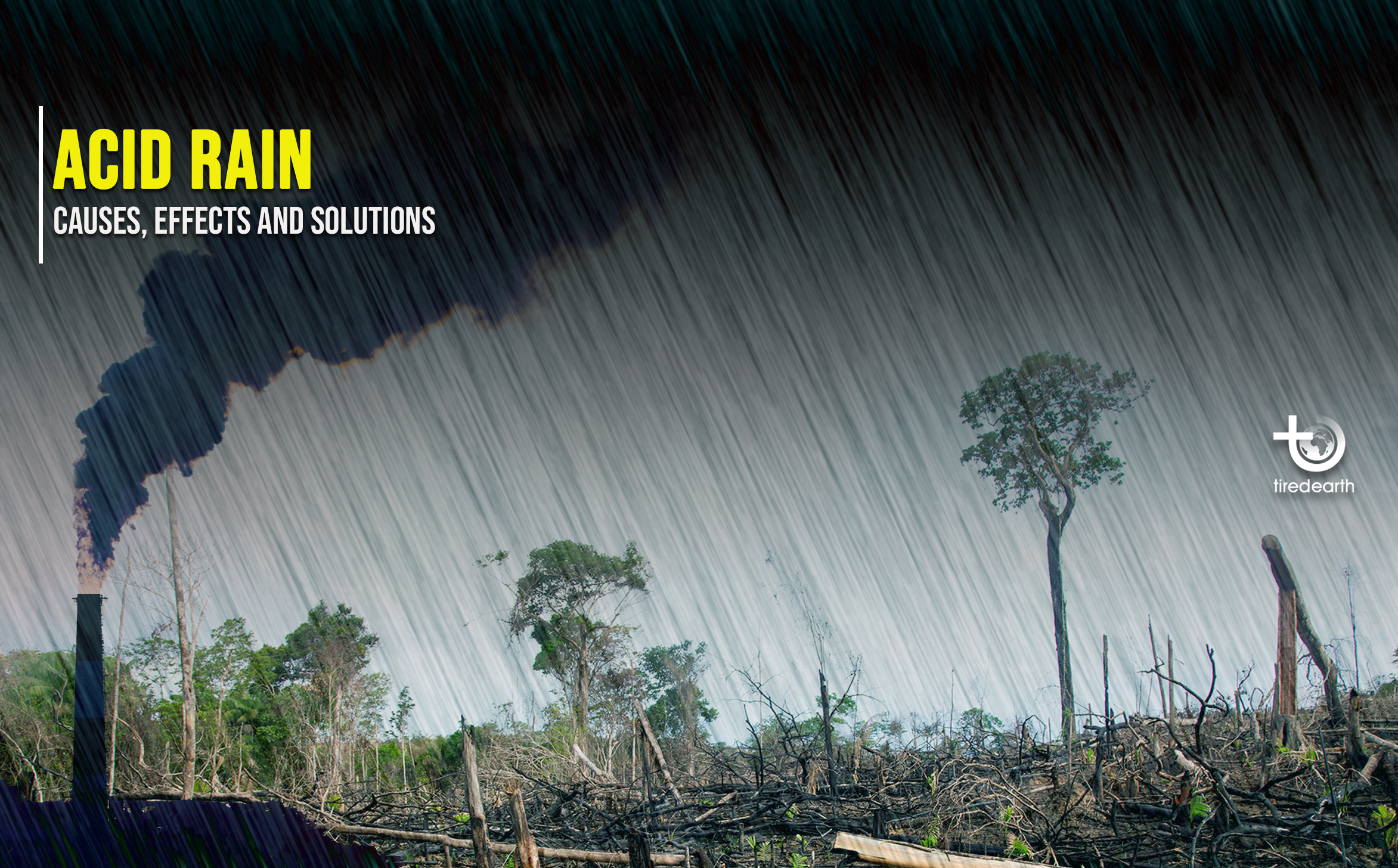30 Nov 2024

Liang Lan
Marine and Environmental Activist
Acid rain affects nearly every biotic and abiotic thing.

The term Acid rain relates to a mixture of deposited pollutant materials coming from the atmosphere and containing more than normal amounts of sulfur dioxide and nitrogen dioxide, with water and oxygen which forms acid deposition.
Releasing of chemicals by humans, usually from power plants, is the major cause of acid rain which affects not only plants, soil, and trees in nature, but also man made creations like buildings and even statues. Acid rain can also result from natural cataclysms, like volcanoes, or decaying plants and animals.
Although all bodies of water have acid in it, but the problem with acid rain is that too much acidic chemical compounds such as sulfuric and nitric acid, formed when Sulfur Dioxide (SO2) and Nitrogen Oxide(NOx) come into contact with water and oxygen in the atmosphere, lower the normal PH of water.
Together with natural disasters such as wildfires, lightning, and volcanic eruption, which blasts pollutants into the air, rotting vegetation and biological processes are natural sources of acid rain forming gases.
However, human based sources such as factories, power generations facilities, oil refineries and automobiles are the primary contributors to chemical gases. Electricity generating power plants burn coal and other fossil fuels which are the biggest contributors to gaseous emissions. They are responsible for about 60% of SO2 and 25% of NOx found in the atmosphere. Moreover, the exhaust from cars, trucks, and buses, especially in urban regions with heavy traffic, and factories in industrialized areas release high scores of pollutant gaseous into the air.
These compound pollutants can be blown by winds or carried in jet streams around the world and turned into acid in presence of water and Oxygen. This acid is capable of reducing the normal pH of rain, which is 5.6, to about 4.3. The lower the number of pH is, the more acidic it is.
From soil and water bodies to buildings and other human-made structures, acid rain affects nearly every biotic and abiotic thing. Along with direct damages to some creatures, others which are supposed to have nothing to do with acid rain, are affected since, throughout food chain, what affects some species eventually affects everything in an interconnected ecosystem.
Essential nutrients in soil such as calcium and magnesium, which are essential for trees to survive, are dissolved as a result of acid rain seepage into the soil. In absence of these vital nutrients, the trees and plants are less healthy and more vulnerable to infections and damage by cold weather and insects. Acid rain also causes Aluminum release in soil which makes it difficult for trees to take up water. It inhibits trees' ability to grow and reproduce.
Water bodies and aquatic environment are the most affected by either direct acid rainfall or flow of precipitations into streams and lakes through forest, roads and fields, which usually contains amount of Aluminum leached from soil.
Most lakes and streams have a pH level near 6.5, while acid rain reduces this number to about 5 or less and makes the water more acidic. A lot of plants and animals, usually younger species, are acid-sensitive while some others are able to tolerate slightly acidic waters. At lower pH levels, most fish eggs cannot hatch and some adult fish even die. Increased acidity and aluminum level in water surfaces are toxic to aquatic wildlife and can also be deadly.
Acid rain water is too dilute to cause direct health problems for human. However, infinitesimal acid particles like nitrogen oxides (NOx) and sulfur dioxide (SO2) known as gaseous particulates, when inhaled cause serious respiratory diseases or deteriorate them when inhaled. This includes asthma and chronic bronchitis as well as an increase in heart disease risk.
Not only are living creatures affected, but acid rain damages many objects. It leaves irreplaceable damage on old heritage buildings as well as weathering limestone and marble buildings and monuments like gravestones. It causes corrosion of metals, like steel bridges, pipes, and even affects the surface of vehicles as it peels the paint.
Acid rain can be stopped in several ways. As well as governments’ role in focusing on more sustainable energy sources, such as solar, wind and water energy, and putting restrictions on the use of fossil fuels, we people play a key role in reducing acid rain emissions.
The biggest step to prevent acid rain is to conserve energy. Simply shutting off electrical appliance Whenever you're not using them is a good start. You can also help reducing auto emissions by using public transport or carpooling as well as riding bikes or even walking to near destinations.
Power plants need to do their part as well. Washing coal to remove some of the sulfur or using coal comprised of low sulfur are some actions they can do. They can also use devices called scrubber. They are capable of removing the sulfur dioxide from gases leaving the smokestack.
Comment
Reply